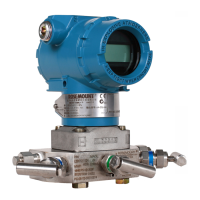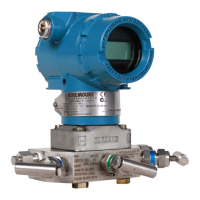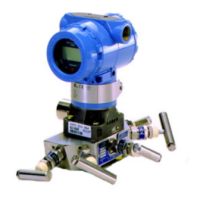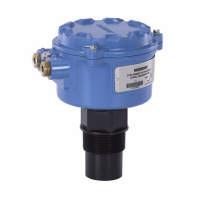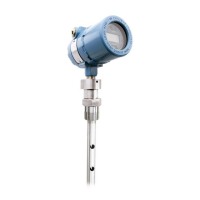August 2016
10
Quick Start Guide
Note
The power terminals are polarity insensitive, which means the electrical polarity of the
power leads does not matter when connecting to the power terminals. If polarity sensitive
devices are connected to the segment, terminal polarity should be followed.
5.1 Signal wiring and shield grounding
Do not run signal wiring in conduit or open trays with power wiring, or near heavy
electrical equipment. Grounding terminations are provided on the outside of the
electronics housing and inside the terminal compartment. These grounds are
used when transient protection terminal blocks are installed or to fulfill local
regulations.
1. Remove the field terminals housing cover.
2. To power the transmitter, connect the power leads to the terminals indicated
on the terminal block label.
3. Tighten the terminal screws to ensure adequate contact.
4. Trim the cable shield as short as practical and insulate from touching the
transmitter housing as indicated in Figure 6 and Figure 7.
Note
Do NOT ground the cable shield at the transmitter; if the cable shield touches the
transmitter housing, it can create ground loops and interfere with communications. To
protect the fieldbus segment from noise, grounding techniques for shield wire require a
single grounding point for shield wire to avoid creating a ground loop.
a. The cable shield should maintain a continuous connection to the power
supply ground.
b. Connect the cable shields for the entire segment to a single good earth
ground at the power supply.
Note
Improper grounding is the most frequent cause of poor segment communications.
5. Reinstall the housing cover and tighten so the cover is fully seated with metal
to metal contact between the housing and cover in order to meet explosion
proof requirements.
6. Plug and seal unused conduit connections.
5.2 Power supply
The transmitter requires between 9 and 32 Vdc (9 and 30 Vdc for intrinsic safety,
and 9 and 17.5 Vdc for FISCO intrinsic safety) to operate and provide complete
functionality.
NOTICE
When the enclosed threaded plug is utilized in the conduit opening, it must be installed with a
minimum thread engagement in order to comply with explosion-proof requirements. For
straight threads, a minimum of seven threads must be engaged. For tapered threads, a
minimum of five threads must be engaged.
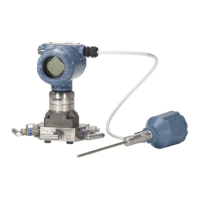
